Gangabal Yatra-from Rajtarangini and Other History books
Harmukh Ganga Yatra The turquoise lake of Gangabal, also known as Harmukh-Ganga is situated at the height of around 13500 feet above sea-level. Since centuries, This pious lake has been revered by the Kashmiri Pandits(KP ).The pundits of the Kashmir used to climb-up to the mountain and immerse the ashes of the dead in the lake of Gangabal, and do the obligatory-“Shraddh”-of their ancestors. This lake is as pious as the Ganga at Haridwar.
The length of the lake is approximately 3 kms and breadth is around 1 Km. Gangabal finds mention in “Nilmat puran” as well as “Rajatarangini”. Authors like walter Lawrence and Sir Francis Younghusband too have mentioned about holy lake Gangabal and its association with the “Shraddh”.Sir Francis has even mentioned that the date of the annual pilgrimage used to be the 8th day of waxing moon in the month of Bhadra. The Day was also known among the Kashmirian hindus as “Ganga-Ashtami”.
Gangabal lake is situated at the base of the mighty Harmukh mountain. The perennial glaciers of the Harmukh are the main source of water to the Harmukh-Ganga as well as Nandkol Lake-which is some feet below the Gangabal.A rivlet joins the Gangabal to Nndkol. Rising close to 17000 feet above MSL, The Harmukh peaks dominate the view towards the north from a great part of the Kashmir valley.
According to Rajtarangini of Kalhan, the Harmugh-Ganga was considered among the holiest “Tirthas” of the Kashmirian. The ancient name of the peaks is “HARAMUKUTA” meaning “shiva’s diadem”.Their height is supposed to be Siva’s favorite residence. Hence Kashmirian tradition stoutly maintains that Human feet cannot reach the peaks summit. The gangabal lake at 13000 feet is looked upon as the true source of the “Kashmir Ganga” or “Sind river” or “sindu”. The old name of “Nundkol” was “KALODAKA” or “Nandisaras”, and was derived from the legend, that makes the lake the joint habitation of both “Kala”, i.e Shiva and his faithful attendant-Nandi. From the latter, the whole collection of sacred sites takes the name “NANDIKHETRA” by which “Kalhana” usually designated it.
It will be pertinent to mention here that the word-“Hindu” is the corrupted form of the river “Sindu”. The people who used to live on the banks of this river were termed by the foreigners as Hindus. Hence all the Hindus across the world owe their identity as a religious-sect- Hindu to the Harmukh mountain and the sacred lake of Gangabal-the true source of Sindu river.
Rajtarangini mentions, this holy lake was the final goal of the “Haramukutganga” pilgrimage, which used to take place annually in the month of “Bhadrapada”, and used to be attended by thousands of pilgrims. The bones of those, who had died, during the year, used to be deposited/immersed in the sacred waters of this lake.
It is also mentioned in some articles, that ,In earlier times, KP’s used to come here and do the Obligatory “Shraddh”(prayers offered to ancestors) and immerse the ashes of those who had died. Before, immersing the ashes into the lake, they used to stock the water for drinking and cooking, as immediately after immersing the ashes, the colour of the waters would change to Red, (because of some micro-organisms), thus making the waters unfit to drink or cook food in.
It was probably, during the reign of Mir Shamas-ud-din iraqi, when, in 1519 AD,10,000 KP’s were killed during pilgrimage to Harmukh Ganga as they had gone there to immerse the ashes of 800 Kashmiri Pandits, who were massacred during Ashura, a year ago. This yatra as well as all other yatras were banned during the Afgan-rule. And many yatras were rediscovered by the Kashmiri Hindus many decades or centuries later. The Famous Amarnath yatra is one such example.
The starting point of this yatra is Naranaag. It lies in the tehsil Kangan, District Ganderbal. There is a cluster of shiva-temple-ruins at Naranaag. These temples were built by the King Lalityaditya Mukhtapida(724-760 CE). Naranaag is a beautiful valley and is surrounded by the thick forests of Deodar.
Harmukh-Ganga pilgrimage was lost somewhere in the pages of History, until, APMCC/HGGT took the initiative in 2009 and re-organized the pilgrimage of Harmukh-yatra after a gap of more than 150 years. Though, a small group of KP’s sometimes used to undertake this journey before 1990. APMCC/HGGT charges only a nominal fee of Rs 100 towards the registration., Once the registered pilgrim reaches the Zeethyar-shrine in Srinagar, he/she becomes the responsibility of the organizers. The organizers of this yatra takes care of the Boarding, Lodging, food as well as the pooja for the “Shraddh” at Gangabal Lake.
The cost per pilgrim comes to around Rs 4500.APMCC/HGGT raises the funds amongst themselves and thus gives a discounted rate of Rs 100/pilgrim. APMCC/HGGT, since many years, have also taken the initiative to renovate the desecrated and dilapidated temples across Kashmir Valley.
This year too APMCC/HGGT is organizing the 7th Annual Gangbal Yatra.This year the “Ganga-Ashtami” falls on 21st September 2015.The yatra will commence on 20th sep.Last year a group of 95 pilgrims visited the Holy Lake.This year the number of registrations has been increased to 130.
There is so much associated with Harmukh Mountain and Gangabal lake.Visiting the holy lake is like reliving the History of Kashmiri Pandits.Last year, I visited this lake, and this year too, I am eagerly waiting… .
My Gangabal Travelogue-2014
It was probably August or September 1989..I along with my friend had gone to Gulab bagh, to meet his relatives. Their house was situated just below the Mountain. My friends cousin-who at that time was working with JK Police-was a raconteur. He narrated his experiences of the journeys up in the mountains and I was glued to his narration and eloquence of story-telling. It was at that time, from him, when I first heard of Gangabal.
He told us about the mythical-creature-Krim, that lives in the Lake called Gangabal. “Krim pulls down any man who attempts to swim in the lake and then eats them alive”, he gesticulated and his tone reflecting sincerity. When he was speaking about the “Krim”, a picture of a water creature such as an Octopus or a squid came in front of my eyes. “Where is Gangabal?”, I asked him out of curiosity. He pointed his finger towards the Mountain situated just above his house and replied, “Beyond these Mountains”. At that very moment, I had made up my mind to visit Gangabal next year in 1990.
But 1990 had its own plan. It took me another 24 years before I could realize my dream. Thanks to team APMCC for doing a yeoman’s job by organizing the Yatra after a gap of more than 100 years.
I landed in Srinagar Airport on 31st August along with my friend Manish Zijoo. It was a bright sunny day. My friend Ravinder Koul was already there waiting for us. He drove us to Zeethyear Shrine. Vinod Pandit of APMCC had organized the stay of yatris for the night at the Dharamsala in Zeathyaer.
Next day, on sep.1, amidst heavy rains, 95 pilgrims, including I and my 3 friends started our journey from the shrine. We were supposed to leave by 7.00 a.m, but rains played a spoilsport, and we got delayed by 2 hours. APMCC/HGT had arranged two buses for transporting the pilgrims from Srinagar to Naranag-the base camp. The weather had cleared up by the time we reached Naranaag. The Indian Army Battalion, Rashtriya Rifles, had organized the breakfast for all the pilgrims. After having the breakfast, and the ceremonial pooja, our ascend towards Gangabal Started. The option of ascending by a horse/ pony-ride was also available. All the Horsemen and Ponywallas are the indigenous Muslim-Gurjars. They were charging 900 rupees/person.
Vinod Pandit had in fact advised us to hire a horse/pony up to the Lake as the climb was very steep. We hired two horses for the journey for two of my friends . The starting climb-known as Buthsher- was indeed very steep. After a few hundred meters of climb, I looked down towards the valley below. A lone cloud was running through the valley below as if in a hurry to meet its beloved, A stream ran through the cleavage of the lush green valley below, Its zig-zag course getting lost out of sight somewhere in between the tortuous valley below. The ruins of the Narannag temple was no longer visible. The imprint of the hooves of the horses on the soil kept on changing, so did the staccato made by the hooves striking the rocks.
I had decided to ascend the journey by foot. My friends who had started the journey with me were left behind somewhere. For most of the time during the ascend, Manish and Ashok kumar koulji remained with me as my companions. While Manish and I were going for the first time, It was second consecutive trip for Ashokji. “Mahra, when will this steep climb end? When will we reach the pinnacle?”, we pestered Ashokji, many a times. “We are almost there”, he would assure us each time.
The steep climb-Buthsher-is an strenuous 4 hour jouney. The path is dotted by the tall Deodar tress. The winding rocky path occasionally threw open the beautiful vistas, worth to be captured by the memory. En-route, a vast stretch of Burnt Deodar was intriguing. The nip in the air had increased and many pilgrims opted to wear extra woolens.
The climb ended at the only refreshment-point cum Dhaba- “Hotel Khedmat”. At this point, we ate the yellow-rice known as “Tehar”. This Tehar was provided to us by the organizers of the journey at the Zeethyaer shrine. After that, most of the pilgrims sipped the hot tea at the Dhaba. After a few hundred meters ahead of the Dhaba, the mist engulfed us, and the chill factor intensified.
The journey from the Dhaba to Gangbal Lake is rather gentle as compared to Buthsher . After an hour or so, a lush meadow revealed itself to us. This meadow also serves as a camp to Rashtriya Rifles. In their traditional hospitable style, they offered the pilgrim snacks and tea. After an hour or so, as we were reaching close to our destination Gangabal, another lake-Nundkul passed by us.
I reached the camp at around 7.30 p.m. I checked-in a camp along with Manish. I was shivering with cold. By 8.30 PM, most of the yatris had reached the camp except two groups-Who reached the camp by 11.30 p.m. At 9 p.m or so we had our dinner and immediately, we nestled under the thick Quilt to keep us warm .In our tent, There were total six quilts and six mattresses for six persons. The tent where I stayed put for two nights was shared by my three KP friends and two Non-KP’s from Ghaziabad. we all bonded well during our stay at Gangbal.
In the late evening, I could hear the sound of Rain. The cold was so intense, that we all opted to combine two mattresses and two quilts per two persons. One mattress was layered above the other and one quilt layered above another quilt. We snuggled under the thick quilts, thus getting some respite from the Cold and all slept like a baby.
Next day , 2nd September,I woke up at 6 a.m, I opened the zip of my tent and peeped outside. The mighty redoubtable Harmukh was standing in front of me.I decided to have a clear look and came out of my tent, hanging a DSLR in my neck. The Harmukh mountain was besieged by a thick blanket of perennial Glacier . A sight to behold.
As I was watching the Mountain, I could not forget that, It was probably, during the reign of Mir Shamas-ud-din iraqi, when, in 1519 AD,10,000 KP’s were killed during pilgrimage to Harmukh Ganga as they had gone there to immerse the ashes of 800 Kashmiri Pandits, who were massacred during Ashura, a year ago.
I ambled towards the lake. The sun had not yet risen. The first looks of the turquoise waters mesmerized me. Nestled in between Mountains, Its aura was reflecting beauty par excellence. Once I reached close, I could see the limpid waters. The pebbles at the base of the lake were quite visible. And the waters quite-Icy!
Before coming to Gangabal, I had read a bit about the lake. It was written in an article, that KP’s used to come here and do the Obligatory “Shraddh”(prayers offered to ancestors) and immerse the ashes of those who had died. Before, immersing the ashes into the lake, they used to stock the water for drinking and cooking, as immediately after immersing the ashes, the colour of the waters would change to Red, (because of some micro-organisms), thus making the waters unfit to drink or cook food in.
At around 9.00 a.m, in the freezing cold, I along with my friends Vishal, Ravi, Manish and Ashokji had a dip in the icy-cold waters of the Gangabal. A group of pilgrims later on performed the “Sharadh” of their ancestors by the bank of the Holy Lake. I meandered around the camp site and climbed down a bit to have a close look of the lake “Nand-kul”. A rivulet joins the Lake Gangabal,-which is some feet higher- to Lake Nand-kul. Both the lakes are situated at the base of the Harmukh-Mountain.
The lake is situated at around 13000 feet above sea level, thus making even an easy activity like walking somewhat difficult. It was raining intermittently from morning till afternoon. After our lunch, the rains felt incessantly till we left the Kashmir valley. Mind you, It was at that time when Kashmir valley faced its worst floods in recent times.
With the advent of the incessant rains, the activity of all the pilgrims was limited to their tents. I and my tent-mates spent most of our time discussing a wide spectrum of topics from religion to politics to caste system, Kashmir, History etc. Occasionally, one among my companions would narrate a joke and the rest would Guffaw, thus making us forget about the Rains outside.
.
The intensity of the rains ebbed somewhere in the evening-when we got some time to click Group photos-The short respite was soon overtaken by the heavy downpour all night. It was raining cats and dogs. The tents where we stayed-in, were erected on the least slanting surface available of the Small-meadow ,near the banks of the small stream, that connected Gangabal lake to Nandkul Lake.
The Rain-proof tents proved to be of no match to the heavy incessant downpour, the water was trickling into our tent throughout the night. The water had also seeped in into our tent through the ground. The mattresses on which we were sleeping was soaked in rain-water at many places. It was rather a difficult night for all of us. We were all waiting for the Dawn.
Next morning 3rd Sep., It was still raining. A group of pilgrims decided to descend as they thought, it to be useless to stay put at the Gangbal. After some deliberations with other pilgrims, It was unanimously decided to climb down the Mountain ASAP. The descend of the group started somewhere around 9-10 a.m. The rain had made the journey precarious, The paths had become slippery. Tracing each other’s footsteps, all pilgrims queued towards the destination.
When I reached back at the only Dhaba-Hotel Khedmat- it was already over crowded. I sipped a couple of hot tea with some biscuits. The Dhaba-Owner had also prepared lentil-rice. I saw Some policemen relishing the same. The descend of the “Buthsher” started from this point. Because of the very heavy rains, The soil was being washed down the track, that lead towards Naranaag.
The Muddy track made the descend on this track very difficult. I lost my balance, and fell down, a couple of times, on this track, but I did not stop. I was drenched in rain, though I had worn a Raincoat. As we neared our destination, the puddles of muddy-water had transformed into an ankle-deep rivulet. The volume, roar and speed of stream below our feet increased with each turn.
Finally, I reached back to Naranaag at around 2.30 p.m. I had driven from “Zeethyaer” shrine to “Naranaag” by a car and I had kept some pressed- clothes in the trunk of the car. The dry-clothes gave me a lot of respite from the cold. There is a Hotel-cum-restaurant at Naranaag, just at the starting point of the journey. I and RavI ordered a cake, which we gulped along with a couple of piping hot Kehwa.
By 4.30 p.m, most of the pilgrims had reached safely back to the base camp at Naranaag. The restaurant was thronged by the pilgrims and each one satiated their thirst and Hunger. It was still raining. Our journey towards the “Zeethyar” shrine started at around dusk.
I left Kashmir Valley on 5th sep. It was still raining incessantly.
The journey of Gangabal remains one of the most adventurous pilgrimage to me till date. The trek is mesmerizing. The Harmukh mountain is transfixing. And the Harmukh ganga also known as Gangabal is surreal, beautiful, mystifying and its waters ooze out spirituality.
The mythical creature “Krim” was not seen by me in the lake, but, when I had heard about it for the first time, it had bewildered me and stirred my imagination. I still wonder whether it ever lived in the lake or not.
I missed many things last time because of the inclement weather. Therefore, I am looking forward, yet again, one more time, to undertake this yatra……
for pics..check the link:
https://kashmirblogs.wordpress.com/2014/09/08/gangabal-yatra-2014kashmir-some-photos/

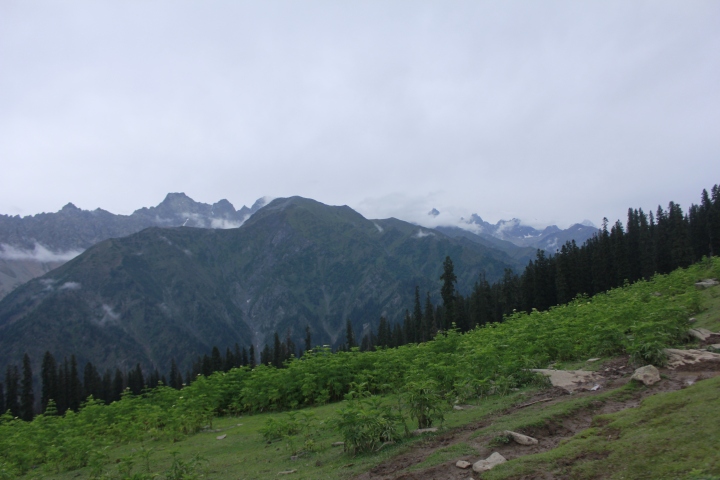





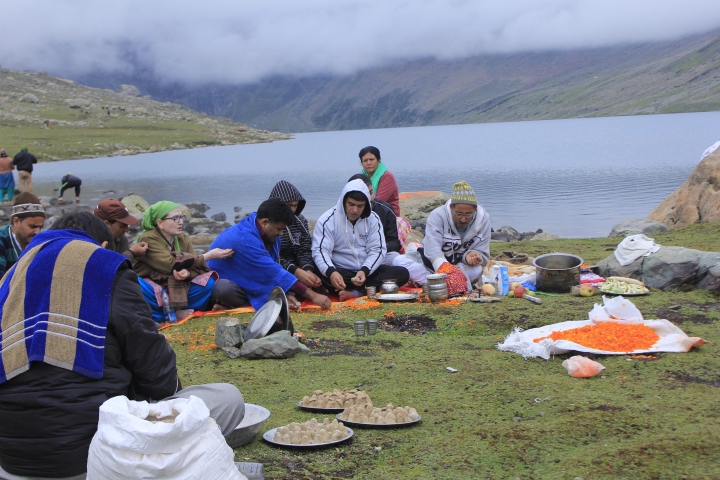
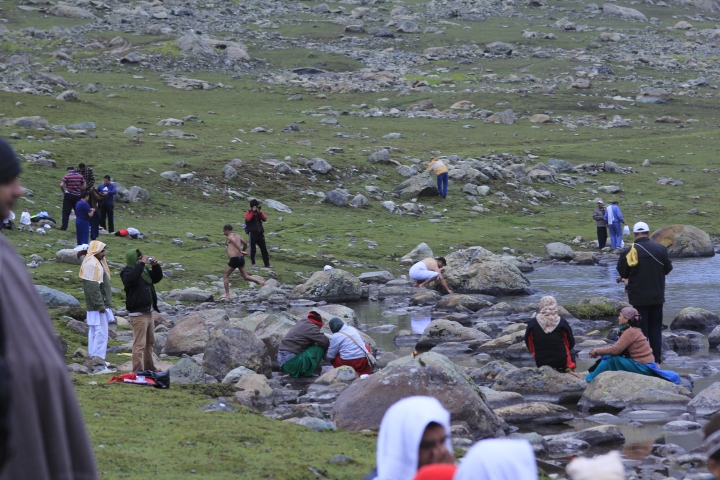

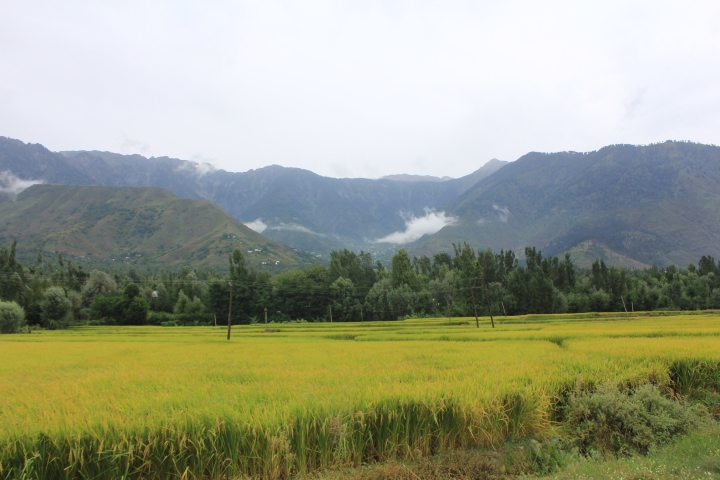








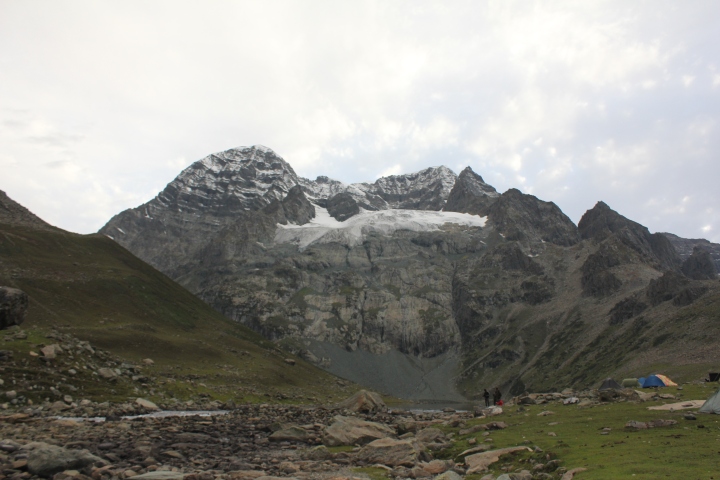

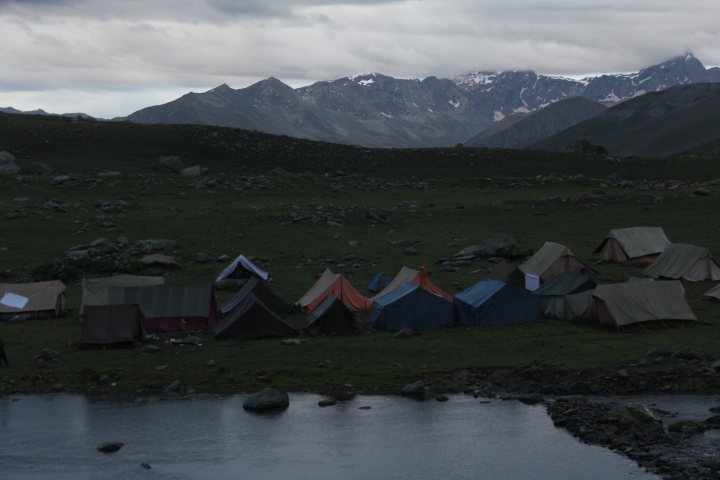









![Validate my RSS feed [Valid RSS]](valid-rss.png)
leave a comment